
The Sagrada Familia stands as a testament to human creativity and architectural innovation, captivating millions of visitors each year. With its intricate designs and towering spires, this basilica is not just a place of worship but a symbol of Barcelona's rich cultural heritage.
As we delve into the heart of this extraordinary masterpiece, we embark on a journey of discovery. **Unveiling the Architectural Marvel: Exploring the Sagrada Familia in Barcelona** invites you to appreciate the genius of Antoni Gaudí and the continuing legacy of his unfinished vision, a true icon of modernist architecture.
Discovering the History Behind the Sagrada Familia's Construction
The history of the Sagrada Familia's construction is as intricate as its design, beginning in **1882**. Initially planned by Francisco de Paula del Villar, the project soon fell into the visionary hands of **Antoni Gaudí**, who took over in 1883. His unique approach transformed the basilica into a masterpiece that blended **Gothic and Art Nouveau** styles, leaving an indelible mark on the architectural landscape of Barcelona.
One of the most remarkable aspects of the Sagrada Familia is its **continuous evolution**. The construction has faced numerous challenges, including funding issues, political turmoil, and the disruptions caused by the Spanish Civil War. Despite these setbacks, the project has persevered, fueled by the dedication of countless artisans and volunteers. Key milestones in its history include:
- Completion of the **Nativity Facade** in 1935.
- The establishment of the **Sagrada Familia Foundation** in 1954 to oversee construction.
- The introduction of modern techniques and materials in the late 20th century.
As we uncover more about the historical context, it's essential to recognize the **collaborative effort** behind the Sagrada Familia. Gaudí's innovative use of geometry and nature-inspired forms has influenced generations of architects, inspiring projects around the world. The ongoing construction, projected to conclude in **2026**, aligns with the centenary of Gaudí's death, symbolizing a tribute to his enduring legacy.
Today, the Sagrada Familia serves not only as a religious site but also as a beacon of cultural resilience. It embodies the spirit of Barcelona, reflecting a city that cherishes its heritage while embracing the future. Each stone laid tells a story of hope, creativity, and the relentless pursuit of beauty, making the basilica a profound narrative of human endeavor.
Architectural Features of the Sagrada Familia: A Design Analysis
The architectural features of the Sagrada Familia reflect Antoni Gaudí's innovative genius, harmoniously blending nature and geometry. The basilica's unique design incorporates hyperboloid structures and catenary arches, which not only enhance its aesthetic appeal but also provide structural integrity. This approach allows the building to rise majestically, with its intricate spires reaching toward the heavens, symbolizing a divine connection.
One of the most striking elements of the Sagrada Familia is its facades, each telling a different story. The three main facades—Nativity, Passion, and Glory—exhibit distinct architectural styles and themes. Key characteristics include:
- Nativity Facade: Richly adorned with sculptures depicting the birth of Christ.
- Passion Facade: Characterized by its stark, angular forms representing the suffering of Jesus.
- Glory Facade: Still under construction, designed to symbolize the resurrection and glory of Christ.
The interior of the Sagrada Familia is equally remarkable, designed to resemble a forest with towering columns that branch out like tree limbs. This naturalistic approach creates a serene and uplifting atmosphere, enhanced by the play of light through stained glass windows, which changes color throughout the day. Such design choices are a testament to Gaudí's belief in natural forms as a source of inspiration.
In addition to its aesthetic innovations, the Sagrada Familia employs advanced engineering techniques that were groundbreaking for its time. The use of computer modeling and modern construction materials has allowed architects to stay true to Gaudí's vision while ensuring the basilica's stability for future generations. This combination of tradition and modernity exemplifies the ongoing dialogue between the past and the future in architectural practice.
The Symbolism of Gaudí's Design in the Sagrada Familia
Antoni Gaudí's design for the Sagrada Familia is deeply infused with symbolism, reflecting both religious beliefs and natural elements. Each aspect of the basilica's structure and ornamentation is intentional, aiming to evoke a sense of divine presence and connection with nature. This intertwining of the spiritual and the organic serves to engage visitors in a profound dialogue about faith and existence.
One of the most significant symbols in the Sagrada Familia is its use of light. Gaudí believed that light represents the divine, and he meticulously designed the stained glass windows to filter sunlight in varying hues. This creates a mesmerizing effect inside the basilica, with colors shifting throughout the day, symbolizing the presence of God. Key elements of this approach include:
- Color Variation: Different colors represent different emotions and spiritual states.
- Spatial Dynamics: The interplay of light enhances the architectural form, creating a living experience.
- Natural Integration: Windows designed to mimic the colors found in nature, promoting harmony.
Moreover, Gaudí's use of organic shapes in the Sagrada Familia's design serves to echo the forms found in nature, fostering a connection between the basilica and the environment. For instance, the columns are designed to resemble tree trunks, branching out to support the vaulted ceilings, which contributes to an uplifting atmosphere. This method exemplifies Gaudí's belief in the inherent beauty of natural forms and their capacity to inspire spiritual reflection.
Finally, the three main facades of the Sagrada Familia—Nativity, Passion, and Glory—each convey distinct theological themes that enhance the overall narrative of the basilica. The facades not only represent different aspects of Christ's life but also invite contemplation on the cycle of life and death. In this way, Gaudí's architectural marvel serves as both a physical structure and a profound symbol of faith, inviting all who enter to explore its deeper meanings.
Visiting the Sagrada Familia: Tips for an Unforgettable Experience
When planning your visit to the Sagrada Familia, it's essential to book your tickets in advance. This not only ensures your entry but also allows you to skip long lines, giving you more time to appreciate the basilica's breathtaking architecture. Consider choosing a guided tour to gain deeper insights into the intricate details and history behind Gaudí's masterpiece. With knowledgeable guides, you'll uncover stories that enrich your experience.
Arriving early in the morning or late in the afternoon can enhance your visit. These times offer a more serene atmosphere and allow you to witness the stunning play of light through the stained glass windows as the sun rises or sets. Don't forget your camera, as the changing colors create enchanting photo opportunities. To make the most of your experience, consider exploring the surrounding park where you can enjoy beautiful views of the basilica.
While inside, take your time to absorb the details. Each facade and interior element tells a story, so be sure to read the descriptions available or use an audio guide. Focus on the unique architectural features, such as the **catenary arches** and **hyperboloid structures**, which are quintessential elements of Gaudí's innovative design. Additionally, plan to spend some time in the museum located on-site, which provides further context about the construction and significance of the Sagrada Familia.
Finally, respect the sacred nature of the site. Visitors are encouraged to maintain a quiet demeanor, especially in prayer areas. Engaging with the space thoughtfully can deepen your understanding of its spiritual significance. With these tips in mind, you're sure to have an unforgettable experience at the Sagrada Familia, a true architectural marvel that continues to inspire awe in all who visit.
Sagrada Familia: A Blend of Gothic and Art Nouveau Styles
The Sagrada Familia exemplifies a remarkable fusion of Gothic and Art Nouveau styles, creating a unique architectural language that resonates throughout Barcelona. Gaudí's innovative approach combines the verticality and grandeur of Gothic cathedrals with the organic forms characteristic of Art Nouveau. This blend results in a structure that is not only visually striking but also deeply symbolic, as it reflects both spiritual aspirations and natural inspirations.
Key elements that showcase this architectural synthesis include:
- Pointed Arches: Typical of Gothic architecture, these arches are prominent in the Sagrada Familia, contributing to its soaring height.
- Curvilinear Forms: Gaudí’s use of flowing lines and shapes draws from the natural world, embodying the principles of Art Nouveau.
- Intricate Ornamentation: The detailed sculptures and carvings are reminiscent of Gothic cathedrals, yet they often depict organic themes that celebrate nature.
Moreover, the basilica's overall design reflects a harmonic relationship between structure and light, a hallmark of both styles. Gaudí ingeniously incorporated natural light into the design, with stained glass windows that not only enhance the beauty of the interior but also create a spiritual ambiance. The interplay of light and shadow within the space serves to elevate the experience of visitors, inviting introspection and connection to the divine.
This architectural marvel continues to inspire awe, demonstrating how the fusion of different styles can give rise to something profoundly original. The Sagrada Familia stands as a testament to the creative genius of Antoni Gaudí, whose vision transcends time, making the basilica a pivotal landmark that bridges historical tradition with modern aesthetics.
Understanding the Religious Significance of the Sagrada Familia
The Sagrada Familia serves as a monumental expression of faith, intertwining religious significance with architectural brilliance. Designed to be a **cathedral**, it embodies the spirit of the Catholic Church, drawing worshippers and visitors alike into a profound spiritual experience. Gaudí envisioned the basilica not merely as a building, but as a place where the divine and the earthly converge, reflecting the sublime relationship between humanity and God.
At the heart of the Sagrada Familia's religious significance lies its **theological symbolism**, which can be observed in various elements of its design. For instance, the three primary facades—Nativity, Passion, and Glory—each represent distinct theological themes and facets of Christ's life. This intentional architectural narrative invites contemplation on key aspects of the Christian faith, including:
- Incarnation: The Nativity Facade celebrates the birth of Jesus, emphasizing the miracle of God becoming man.
- Suffering: The Passion Facade starkly depicts the crucifixion, inviting reflection on Christ's sacrifice.
- Resurrection: The Glory Facade symbolizes eternal life and the hope of salvation.
Furthermore, the intricate details and artwork throughout the Sagrada Familia serve to communicate biblical stories and messages, enriching the visitor's understanding of Christianity. Gaudí's use of light within the interior space is particularly noteworthy, as it symbolizes the divine presence, creating an ethereal atmosphere that enhances the spiritual experience. The interplay of colors from the stained glass is not only visually stunning but also serves to evoke a sense of wonder and reverence.
In essence, the Sagrada Familia stands as a living testament to the Catholic faith, a place where architecture and spirituality coalesce. Its ongoing construction reflects the continuing journey of faith, with each stone laid representing a step toward completion and a deeper connection to the divine. This architectural marvel invites all who enter to explore their own beliefs and appreciate the sacredness of the space.
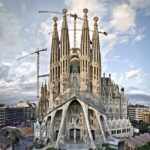 The Intriguing History of Barcelona's Sagrada Familia
The Intriguing History of Barcelona's Sagrada Familia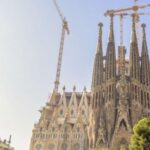 Exploring the Majestic Sagrada Familia in Barcelona: A Guide to Booking Tickets
Exploring the Majestic Sagrada Familia in Barcelona: A Guide to Booking TicketsIf you want to know other articles similar to Unveiling the Architectural Marvel: Exploring the Sagrada Familia in Barcelona you can visit the category WHERE YOU CAN GO.
Leave a Reply


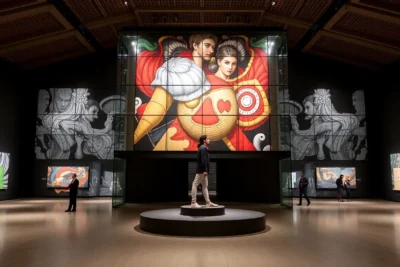
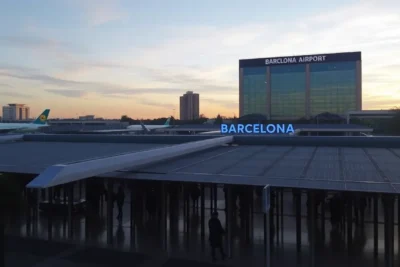

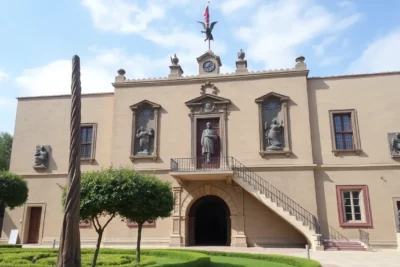
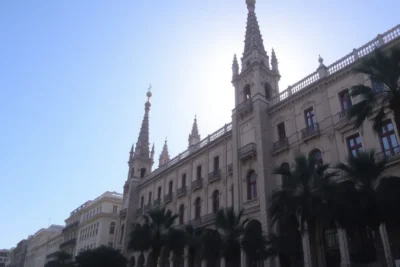

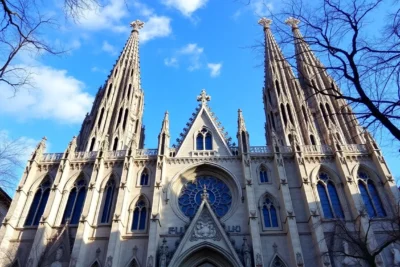
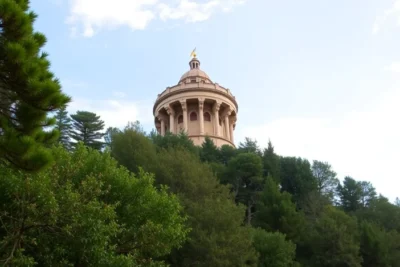
Read more!